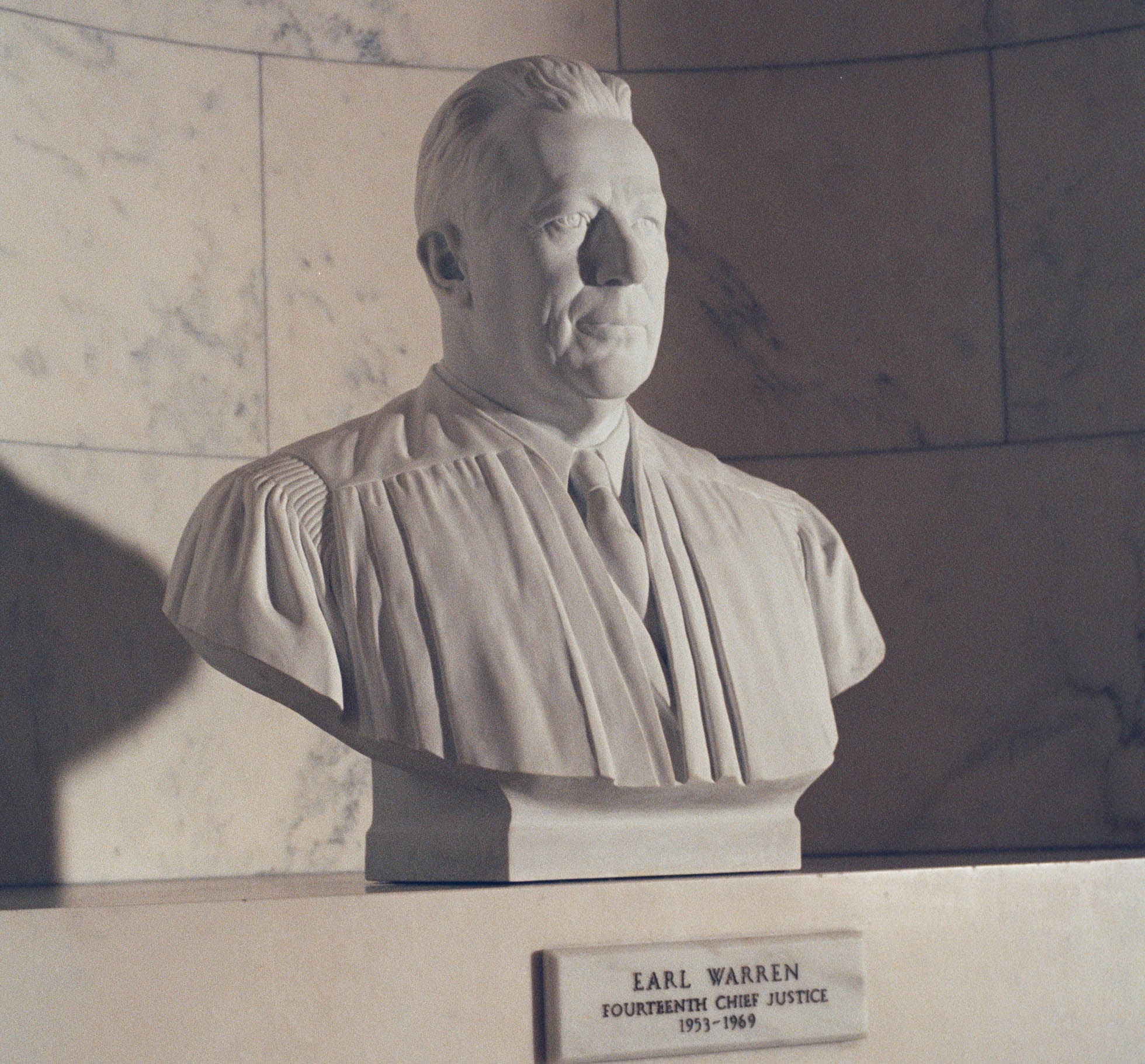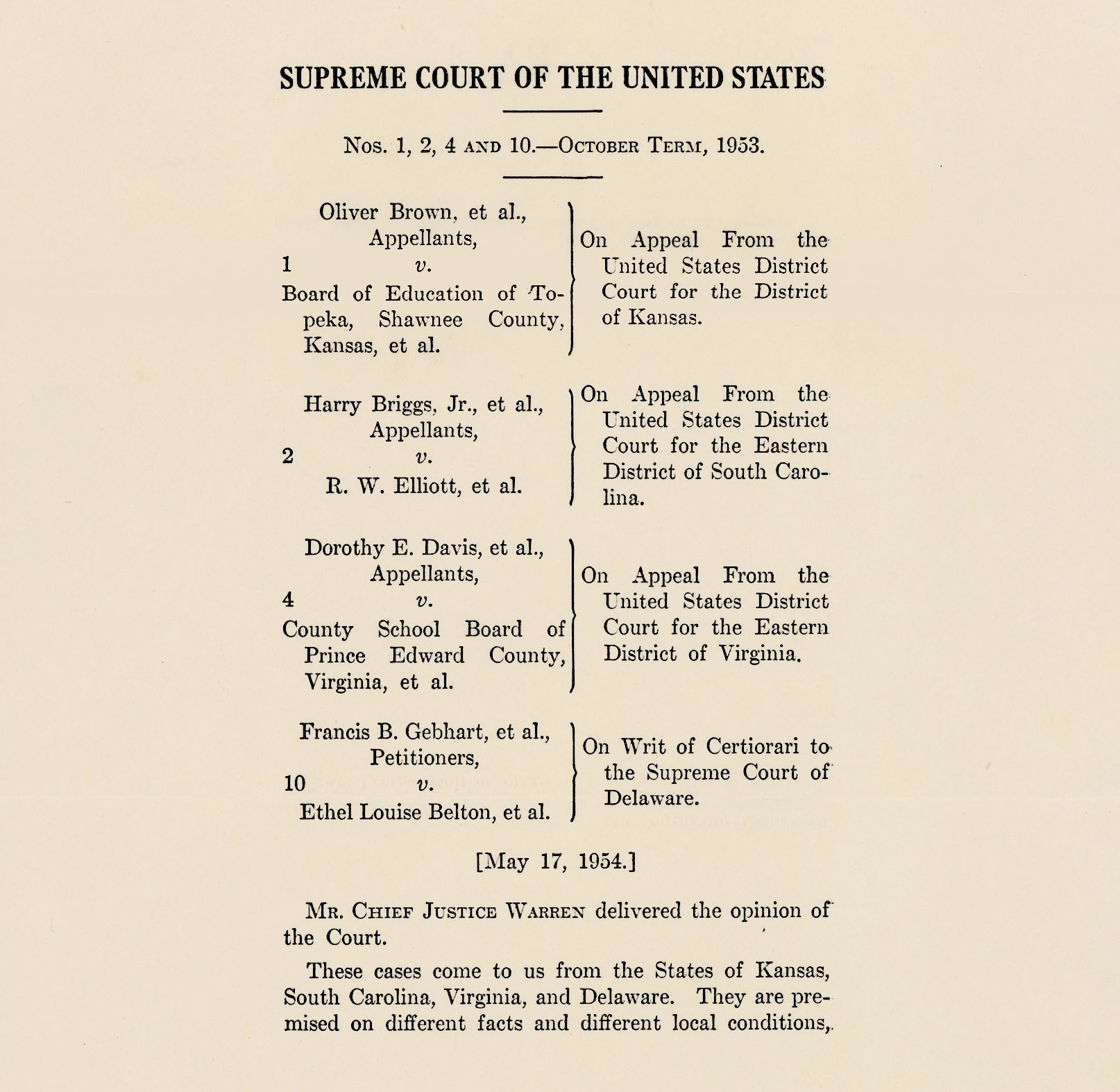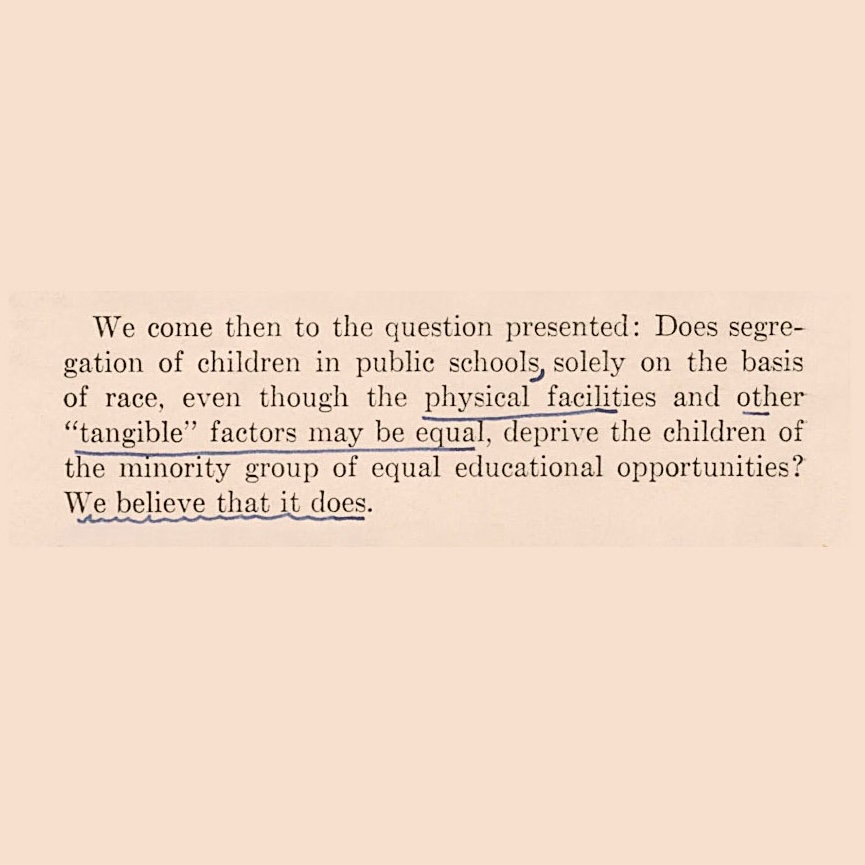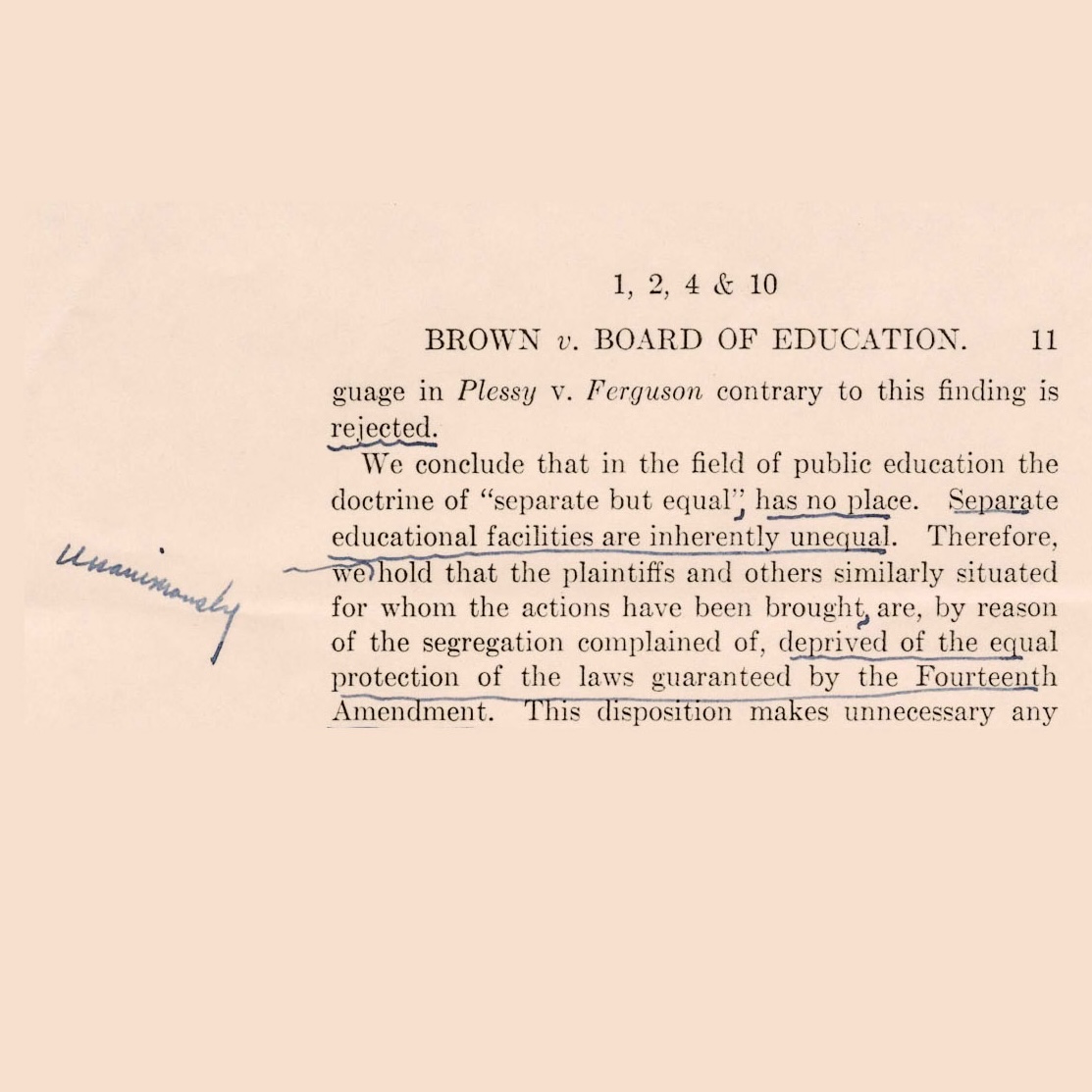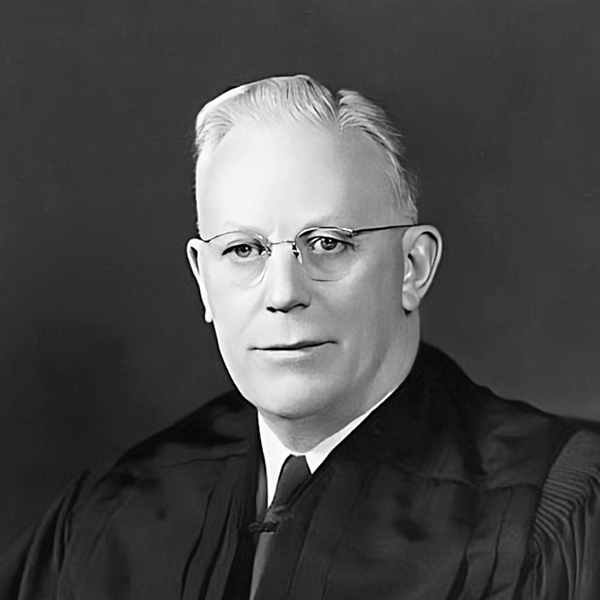Oyez!
Oyez!
Oyez!
May 17, 1954:
Lawyers,
reporters,
and
spectators
have
gathered
at
the
U.S.
Supreme
Court
for
something
unusual.
The
Marshal
calls
the
room
to
order.
All
persons
having
business
before
the
Honorable,
the
Supreme
Court
of
the
United
States,
are
admonished
to
draw
near
and
give
their
attention.
Attention
isn't
in
short
supply.
The
new
Chief
Justice
Earl
Warren
is
preparing
to
read
a
momentous
opinion -
one
that
will
cause
a
legal
and
cultural
earthquake
across
the
country.
These
cases
come
to
us
from
the
states
of
Kansas,
South
Carolina,
Virginia,
and
Delaware.
In
fact,
there
are
four
cases
rolled
into
one.
Together,
they
pose
one
fundamental
question:
Does
the
Constitution
allow
states
to
segregate
public
schools?
The
opinion
is
known
by
the
first
case
before
the
court:
Brown
v.
the
Board
of
Education
of
Topeka,
Kansas,
or
Brown
v.
Board.
Warren
spends
a
few
minutes
explaining
the
aftermath
of
a
Supreme
Court
case
from
1896,
Plessy
v.
Ferguson.
It
established
a
doctrine
of
so-called
"separate
but
equal"
segregation.
But
at
this
point,
it's
still
unclear
which
way
the
justices
have
decided.
Then
Warren
gets
to
the
part
that
changed
history.
We
come
then
to
the
question
presented:
Does
segregation
of
children
in
public
schools
solely
on
the
basis
of
race,
even
though
the
physical
facilities
and
other
"tangible"
factors
may
be
equal,
deprive
the
children
of
the
minority
group
of
equal
educational
opportunities?
We
believe
that
it
does.
We
believe
that
it
does.
To
people
in
the
room,
those
five
words
signal
what's
about
to
come-
a
complete
reversal
of
a
doctrine
that
allowed
schoolchildren
to
be
educated
differently
based
on
the
color
of
their
skin.
Warren
continues:
We
conclude
that,
in
the
field
of
public
education,
the
doctrine
of
"separate
but
equal"
has
no
place.
Separate
educational
facilities
are
inherently
unequal.
Therefore,
we
unanimously
hold
that
the
plaintiffs
and
others
similarly
situated
for
whom
the
actions
have
been
brought
are,
by
reason
of
the
segregation
complained
of,
deprived
of
the
equal
protection
of
the
laws
guaranteed
by
the
Fourteenth
Amendment.
Earl
Warren
has
added
the
word
"unanimously."
People
in
the
room
gasp.
It
was
unexpected.
Let's
pause
here
for
a
quick
explanation
of
what
you're
hearing.
No
microphones
were
recording
Warren's
words
that
day
in
1954.
The
court
didn't
start
regular
recording
of
its
proceedings
until
the
following
year.
But
this
is
Warren's
voice.
Combining
other
recordings
of
the
Chief
Justice
with
an
actor's
performance,
you're
hearing
a
digitally
recreated
version
of
his
voice
reading
the
transcript
of
the
Brown
decision.
Warren's
opinion
ends
with
the
standard
language
indicating
that
the
Supreme
Court
expects
its
ruling
to
be
followed
across
the
country.
It
is
so
ordered.
If
only
it
were
that
simple.
For
decades
after
that
1954
ruling,
states
would
fight
the
Court's
order
to
integrate
schools.
And
even
today,
70
years
later,
forms
of
racial
segregation
remain
in
the
United
States.
But
Brown
v.
Board
marked
a
turning
point,
as
the
nation's
highest
court
began
dismantling
legal
segregation.
On
this
website,
we've
recreated
the
historic
oral
arguments
in
the
Brown
v.
Board
cases,
an
epic
clash
of
legal
titans
that
led
to
the
decision.
Using
the
latest
voice
replication
techniques,
we've
cloned
the
voices
of
key
participants.
That
includes
Thurgood
Marshall,
the
legendary
civil
rights
lawyer
who
won
this
case
and
who
went
on
to
become
the
first
Black
justice
on
the
Supreme
Court.
I
think
when
we
predict
what
might
happen,
I
know
in
the
South
where
I
spent
most
of
my
time,
you
will
see
white
and
colored
kids
going
down
the
road
together
to
school.
They
separate
and
go
to
different
schools,
and
they
come
out
and
they
play
together.
I
do
not
see
why
there
would
necessarily
be
any
trouble
if
they
went
to
school
together.
We
invite
you
to
explore
the
site
and
listen
in
on
these
oral
arguments,
which
no
one
outside
the
Court's
marble
walls
has
ever
heard
before.
--:--
--:--

